- Home
- Sebastian Junger
War Page 2
War Read online
Page 2
O’Byrne thought that made sense and joined the 173rd Airborne, based in Vicenza, Italy. He’d never been out of the country before. He wound up in Second Platoon, Battle Company, which was already thought of as one of the top units in the brigade. Battle Company had fought well in Iraq and had seen a lot of combat in Afghanistan on its previous deployment. There were four platoons in the company, and of them all, Second Platoon was considered the best-trained and in some ways the worst-disciplined. The platoon had a reputation for producing terrible garrison soldiers — men who drink and fight and get arrested for disorderly conduct and mayhem — but who are extraordinarily good at war. Soldiers make a distinction between the petty tyrannies of garrison life and the very real ordeals of combat, and poor garrison soldiers like to think it’s impossible to be good at both.
“I used to score three hundreds on my PT tests shit-canned… just drunk as fuck,” O’Byrne told me. “That’s how you got sober for the rest of the day. I never got in trouble, but Bobby beat up a few MPs, threatened them with a fire extinguisher, pissed on their boots. But what do you expect from the infantry, you know? I know that all the guys that were bad in garrison were perfect fucking soldiers in combat. They’re troublemakers and they like to fight. That’s a bad garrison trait but a good combat trait — right? I know I’m a shitty garrison soldier, but what the fuck does it matter? Okay, I got to shine my fucking boots. Why do I care about shining my goddamn boots?”
The weekend before they deployed to Afghanistan, O’Byrne and three other soldiers took the train to Rome for a last blowout. They drank so much that they completely cleaned out the café car. Traveling with O’Byrne were two other privates, Steve Kim and Misha Pemble-Belkin, and a combat medic named Juan Restrepo. Restrepo was born in Colombia but lived in Florida and had two daughters with a woman back home. He spoke with a slight lisp and brushed his teeth compulsively and played classical and flamenco guitar at the barbecues the men threw on base. Once in garrison he showed up at morning PT drunk from the night before, but he was still able to run the two-mile course in twelve and a half minutes and do a hundred sit-ups. If there was a guaranteed way to impress Second Platoon, that was it.
On the train Restrepo pulled out a little one-chip camera and started shooting video of the trip. The men were so drunk they could barely speak. Kim was propped against the window. Pemble tried to say something about putting a saddle on a miniature zebra and riding it around. O’Byrne said his job in Rome was to just keep Restrepo out of trouble. “Not possible, bro,” Restrepo said. “You can’t tame the beast.”
On the far side of the window the gorgeous Italian countryside slid past. “We’re lovin’ life and getting ready to go to war,” Restrepo said, his arm around O’Byrne’s neck. His face was so close to the camera there was almost a fish-eye effect. “We’re goin’ to war. We’re ready. We’re goin’ to war… we’re goin’ to war.”
• • •
The Korengal Valley is sort of the Afghanistan of Afghanistan: too remote to conquer, too poor to intimidate, too autonomous to buy off. The Soviets never made it past the mouth of the valley and the Taliban didn’t dare go in there at all. When 10th Mountain rolled into the valley in 2006, they may well have been the first military force ever to reach its southern end. They were only down there a day, but that push gave 10th Mountain some breathing room to finish building the KOP at the site of an old lumberyard three miles in. The lumberyard was not operational because the Afghan government had imposed a ban on timber exports, in large part because the timber sales were helping fund the insurgency. Out-of-work timber cutters traded their chainsaws for weapons and shot at the Americans from inside bunkers made out of the huge cedar logs they could no longer sell.
They were helped by Arab and Pakistani fighters from across the border in Bajaur Province and local militias run by a veteran of the Soviet jihad named Gulbuddin Hekmatyar. Video made by insurgents during one attack shows tiny figures — American soldiers — sprinting for cover and trying to shoot back from behind ragged sandbag walls. The KOP is surrounded by high ground, and to mount an attack local fighters only had to scramble up the back sides of the ridges and pour machine-gun fire down into the compound. This is called “plunging fire,” and it is hard to suppress or take cover from. The only way to fix the problem was to take over the high ground with small outposts, but those positions then also became vulnerable to attack. The battle plan for the valley became a game of tactical leapfrog that put the Americans into the village of Babiyal by the spring of 2007.
Babiyal was about half a mile south of the KOP and had ties to the insurgents, though it was not overtly hostile. American soldiers with 10th Mountain rented a residential compound from a local schoolteacher and fortified it with enormous cedar logs that locals had cut on the upper slopes of the valley. The position was named Phoenix, after the city in Arizona, and had its counterpart in Firebase Vegas across the valley. Unfortunately, all you had to do to figure out the tactical problems at Phoenix was to tilt your head upward at Table Rock. Insurgents could pound Phoenix from there and then just run down the back side of the ridge when the Americans started hitting back. One American was killed by an 88 mm recoilless round that shrieked through the narrow opening of his bunker and detonated; another was killed while running to one of the machine-gun positions during an attack. A soldier at the KOP was shot while standing at one of the piss tubes. An American contract worker was shot and wounded while taking a nap on his cot. Another soldier stumbled and drowned while wading across the Korengal River in his body armor.
At a brief ceremony at the KOP on June 5, Captain Jim McKnight of 10th Mountain took down his unit’s guidon, climbed into the back of a Chinook, and flew out of the valley forever. Battle Company’s guidon was immediately raised in its place. In attendance was a dark, handsome man of Samoan ancestry named Isaia Vimoto; he was the command sergeant major of the 173rd and the highest enlisted man in the brigade. Vimoto’s nineteen-year-old son, Timothy, was a private first class in Second Platoon, and after the ceremony Vimoto asked Battle Company’s First Sergeant LaMonta Caldwell where his son was. Caldwell walked Vimoto over to the wire and pointed down-valley.
‘He’s down there at Phoenix,’ he told him.
Vimoto had requested that his son serve in Battle Company because he and Caldwell were best friends. ‘You tell him I said hello,’ he told Caldwell before he left the KOP. ‘Tell him I came out here.’
There had been some contact earlier in the day, and Second Platoon spotted what they thought was an enemy position on top of Hill 1705. A twenty-five-man element, including two Afghan soldiers and an interpreter, left the wire at Phoenix in early evening and started walking south. They walked in plain view on the road and left during daylight hours, which were two things they’d never do again — at least not at the same time. They passed the villages of Aliabad and Loy Kalay and then crossed a bridge over a western tributary of the Korengal. They started up through the steep holly forests of 1705, crested the top, and then started down the other side.
The enemy was waiting for them. They opened fire from three hundred yards away with machine guns and rocket-propelled grenades. A private named Tad Donoho dropped prone and was low-crawling to cover when he saw a line of bullets stitching toward him in the dirt. He rolled to one side and wound up near PFC Vimoto. Both men began returning fire, bullets kicking up dirt all around them, and at one point Donoho saw Vimoto open his mouth as if he were about to yell something. No sound came out, though; instead, his head jerked back and then tipped forward. He didn’t move again.
Donoho started shouting for the platoon medic, but there was so much gunfire that no one could hear him. It didn’t matter anyway; the bullet had gone through Vimoto’s head and killed him instantly. One moment he was in the first firefight of his life, the next moment he was dead. Donoho shot through all twelve magazines he carried and then pulled more out of his dead friend’s ammo rack. There was so much gunfire that the only way the men could
move without getting hit was to low-crawl. They were on a steep ridge at night getting raked by machine-gun fire, and everyone knew the MEDEVAC helicopters would never dare attempt a landing in those conditions; they were going to have to get Vimoto and another man named Pecsek down to the road to get picked up. Pecsek had been shot through the shoulder but seemed able to walk. A staff sergeant named Kevin Rice hoisted Vimoto onto his back, and the men started down the steep, rocky slopes of 1705 in the darkness and the rain.
Captain Dan Kearney, the commander of Battle Company, drove down to Aliabad in a Humvee to help evacuate the casualties and remembers turning a corner in the road and hitting a wall of Taliban firepower. “I was blown away by the insurgents’ ability to continue fighting despite everything America had to throw at them,” Kearney told me later. “From that point on I knew it was — number one — a different enemy than I fought in Iraq and that — number two — the terrain offered some kind of advantage that I’d never seen or read or heard about in my entire life.”
When Battle Company first arrived in the Korengal, O’Byrne was a gunner in Second Platoon’s Weapons Squad. A squad is generally eight men plus a squad leader, and those eight men are divided into two fire teams designated “alpha” and “bravo.” In a Weapons Squad, each team would be responsible for an M240 heavy machine gun. O’Byrne spent two months in Weapons Squad and then switched to First Squad under Staff Sergeant Josh McDonough. The men called him “Sar’n Mac,” and under his tutelage First Squad became one of the hardest-hitting in the company, possibly the entire battalion. When his men didn’t perform well, Mac would tilt his head forward and bore through them with an unblinking stare that could go on for minutes; while he was doing that he was also yelling. “Mac was just a fucking mule,” O’Byrne said. “He was just so goddamn strong. His legs were the size of my head. His guys were his only concern. If one of us team leaders wasn’t doing our job he got furious — because he cared. He just had a very rough way of showing it.”
First Squad was line infantry, which meant they fought on foot and carried everything they needed on their backs. Theoretically, they could walk for days without resupply. O’Byrne was in charge of First Squad’s alpha team, which included a former high school wrestler from Wisconsin named Steiner, an eighteen-year-old from Georgia named Vaughn, and a wiry, furtive oddball named Monroe. Each man carried three or four hand grenades. Two out of the four carried standard M4 assault rifles and a chest rack of thirty-round magazines. Another man carried an M4 that also fired big fat rounds called 203s. The 203 rounds explode on impact and are used to lob onto enemy fighters who are behind cover and otherwise couldn’t be hit. The fourth man carried something called a Squad Automatic Weapon — usually referred to as a SAW. The SAW has an extremely high rate of fire and basically vomits rounds if you so much as touch the trigger. If you “go cyclic” — fire without stopping — you will go through 900 rounds in a minute. (You’ll also melt the barrel.) O’Byrne’s fire team probably had enough training and ammo to hold off an enemy force three or four times their size.
Every platoon also has a headquarters element composed of a medic, a forward observer, a radio operator, a platoon sergeant, and a lieutenant who had graduated from officer candidate school. Second Platoon went through two lieutenants during the first half of their deployment and then wound up with Steve Gillespie, a tall, lean marathon runner who reminded his men of a movie character named Napoleon Dynamite. They called him Napoleon behind his back and occasionally to his face but did it with affection and respect: Gillespie was such a dedicated commander that his radioman had to keep pulling him down behind cover during firefights.
Lieutenants have a lot of theoretical knowledge but not much experience, so they are paired with a platoon sergeant who has probably been in the Army for years. Second Platoon’s sergeant was a career soldier named Mark Patterson who, at age thirty, had twelve years on the youngest man in the unit. The men called him Pops. Patterson was both the platoon enforcer and the platoon representative, and his role allowed him to keep an eye not only on the grunts but on the lieutenants as well. His face got bright red when he was angry or when he was working very hard, and he could outwalk just about everyone in the platoon. I never saw him look even nervous during a fight, much less scared. He commanded his men like he was directing traffic.
The men of Second Platoon were from mainland America and from wherever the American experiment has touched the rest of the world: the Philippines and Guam and Mexico and Puerto Rico and South Korea. A gunner in Weapons Squad named Jones claims he made thousands of dollars selling drugs before joining the Army to avoid getting killed on the streets of Reno. O’Byrne’s soldier Vaughn was eleven years old when 9/11 happened and decided right then and there to join the U.S. Army. As soon as he could, he did. Danforth was forty-two years old and had joined the year before because he was bored; the others called him Old Man and asked a lot of joking questions about Vietnam. A private named Lizama claimed his mother was a member of the Guamese Congress. There was a private named Moreno from Beeville, Texas, who worked in the state penitentiary and had been a promising boxer before joining up. There was a sergeant whose father was currently serving in Iraq and had nearly been killed by a roadside bomb.
The Army has a lot of regulations about how soldiers are required to dress, but the farther you get from the generals the less those rules are followed, and Second Platoon was about as far from the generals as you could get. As the deployment wore on and they got pushed farther into enemy territory it was sometimes hard to tell you were even looking at American soldiers. They wore their trousers unbloused from their boots and tied amulets around their necks and shuffled around the outpost in flip-flops jury-rigged from the packing foam used in missile crates. Toward the end of their tour they’d go through entire firefights in nothing but gym shorts and unlaced boots, cigarettes hanging out of their lips. When the weather got too hot they chopped their shirts off below the armpit and then put on body armor so they’d sweat less but still look like they were in uniform. They carried long knives and for a while one guy went on operations with a small samurai sword in his belt. The rocks ripped their pants to shreds and they occasionally found themselves more or less exposed on patrol. A few had “INFIDEL” tattooed in huge letters across their chests. (“That’s what the enemy calls us on their radios,” one man explained, “so why not?”) Others had tattoos of angel wings sprouting from bullets or bombs. The men were mostly in their early twenties, and many of them have known nothing but life at home with their parents and war.
The men who were killed or wounded were replaced with cherries, and if the older men got bored enough they sometimes made the cherries fight each other. They’d been trained in hand-to-hand combat, so they all knew how to choke someone out; if you do it right, with the forearm against the carotid artery, the person loses consciousness in seconds. (They die in a couple of minutes if you don’t release the pressure.) Choking guys out was considered fine sport, so soldiers tended to keep their backs to something so no one could sneak up from behind. Jumping someone was risky because everyone was bound by affiliations that broke down by platoon, by squad, and finally by team. If a man in your squad got jumped by more than one guy you were honor-bound to help out, which meant that within seconds you could have ten or fifteen guys in a pile on the ground.
O’Byrne’s 203 gunner, Steiner, once got stabbed trying to help deliver a group beating to Sergeant Mac, his squad leader, who had backed into a corner with a combat knife. In Second Platoon you got beat on your birthday, you got beat before you left the platoon — on leave, say — and you got beat when you came back. The only way to leave Second Platoon without a beating was to get shot. No other platoons did this; the men called it “blood in, blood out,” after a movie one of them had seen, and officers were not exempted. I watched Gillespie get held down and beaten, and Pops got pounded so hard his legs were bruised for days. The violence took many forms and could break out at almost any time. Aft
er one particularly quiet week — no firefights, in other words — the tension got so unbearable that First Squad finally went after Weapons Squad with rocks. A rock fight ensued that got so heavy, I took cover behind some trees.
Men wound up bleeding and heated after these contests but never angry; the fights were a product of boredom, not conflict, so they always stayed just this side of real violence. Officers were left out of the full-on rumbles, and there were even a couple of enlisted guys who had just the right mix of cool and remove to stay clear of the violence. Sergeant Buno was one of those: he ran Third Squad and had Aztec-looking tattoos on his arms and a tattooed scorpion crawling up out the front of his pants. Buno almost never spoke but had a handsome, impassive face that you could read anything you wanted into. The men suspected he was Filipino but he never admitted to anything; he just wandered around listening to his iPod and saying strange, enigmatic things. The men nicknamed him Queequeg. He moved with the careful precision of a dancer or a martial artist, and that was true whether he was in a firefight or brushing his teeth. Once someone asked him where he’d been the previous night.
“Down in Babiyal,” he answered, “killing werewolves.”
2
I ARRIVE IN THE KORENGAL A WEEK AFTER VIMOTO was killed, flying into the KOP on a Chinook that pounds over the Abas Ghar and drops fast onto a patch of crushed rock that serves as a landing zone. I’ve planned five trips into the valley to cover one platoon over the course of their fifteen-month deployment. I’ve been in Afghanistan many times before — starting in 1996, the year that Taliban fighters swept into Kabul — and it is a country that I care about tremendously. This time, however, I’m not interested in the Afghans and their endless, terrible wars; I’m interested in the Americans. I’m interested in what it’s like to serve in a platoon of combat infantry in the U.S. Army. The moral basis of the war doesn’t seem to interest soldiers much, and its long-term success or failure has a relevance of almost zero. Soldiers worry about those things about as much as farmhands worry about the global economy, which is to say, they recognize stupidity when it’s right in front of them but they generally leave the big picture to others.

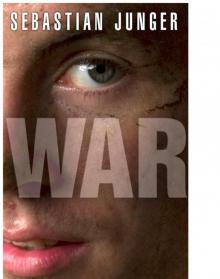 War
War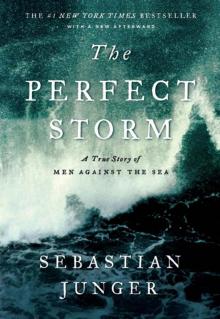 The Perfect Storm: A True Story of Men Against the Sea
The Perfect Storm: A True Story of Men Against the Sea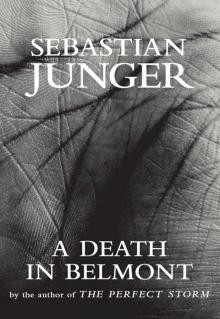 A Death in Belmont
A Death in Belmont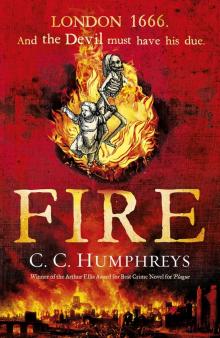 Fire
Fire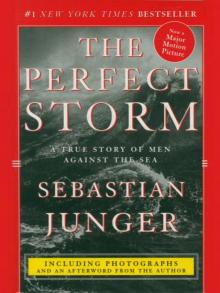 The Perfect Storm
The Perfect Storm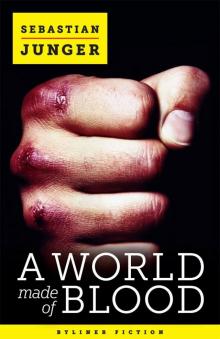 A World Made of Blood (Kindle Single)
A World Made of Blood (Kindle Single)